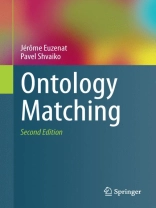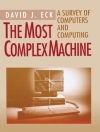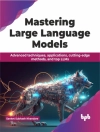Ontologies tend to be found everywhere. They are viewed as the silver bullet for many applications, such as database integration, peer-to-peer systems, e-commerce, semantic web services, or social networks. However, in open or evolving systems, such as the semantic web, different parties would, in general, adopt different ontologies. Thus, merely using ontologies, like using XML, does not reduce heterogeneity: it just raises heterogeneity problems to a higher level.
Euzenat and Shvaiko’s book is devoted to ontology matching as a solution to the semantic heterogeneity problem faced by computer systems. Ontology matching aims at finding correspondences between semantically related entities of different ontologies. These correspondences may stand for equivalence as well as other relations, such as consequence, subsumption, or disjointness, between ontology entities. Many different matching solutions have been proposed so far from various viewpoints, e.g., databases, information systems, and artificial intelligence.
The second edition of Ontology Matching has been thoroughly revised and updated to reflect the most recent advances in this quickly developing area, which resulted in more than 150 pages of new content. In particular, the book includes a new chapter dedicated to the methodology for performing ontology matching. It also covers emerging topics, such as data interlinking, ontology partitioning and pruning, context-based matching, matcher tuning, alignment debugging, and user involvement in matching, to mention a few. More than 100 state-of-the-art matching systems and frameworks were reviewed.
With Ontology Matching , researchers and practitioners will find a reference book that presents currently available work in a uniform framework. Inparticular, the work and the techniques presented in this book can be equally applied to database schema matching, catalog integration, XML schema matching and other related problems. The objectives of the book include presenting (i) the state of the art and (ii) the latest research results in ontology matching by providing a systematic and detailed account of matching techniques and matching systems from theoretical, practical and application perspectives.
Inhaltsverzeichnis
Introduction.- Part I The matching problem.- Applications.- The matching problem.- Methodology.- Part II Ontology matching techniques.- Classifications of ontology matching techniques.- Basic similarity measures.- Global matching methods.- Matching strategies.- Part III Systems and evaluation.- Overview of matching systems.- Evaluation of matching systems.- Part IV Representing, explaining, and processing alignments.- Frameworks and formats: representing alignments.- User involvement.- Processing alignments.- Part V Conclusions.- Conclusions.- Appendix A: Legends of figures.- Appendix B: Running example.- Appendix C: Exercises.- Appendix D: Solution to exercises.
Über den Autor
Jérôme Euzenat is senior research scientist at INRIA where he leads the Exmo team dedicated to computer-mediated exchanges of structured knowledge. He is supervising the ‚Heterogeneity‘ work package of the Knowledge web network of excellence which aims at structuring the European research community in ontology alignment and merging.
Pavel Shvaiko is a postdoc fellow at the Department of Information and Communication Technology (DIT) of the University of Trento (Uni Tn), Trento, Italy. In 2006, he finished his Ph D on ‚Iterative Schema-based Semantic Matching‘. Currently, he works in a European research project on matching multiple schemas, classifications, ontologies as a solution to the semantic heterogeneity problem.












